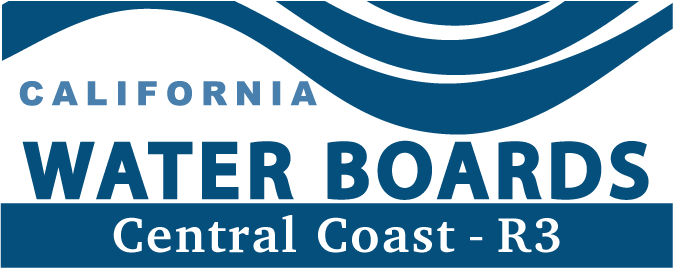
Irrigated Lands Program (ILP)
Welcome to the Irrigated Lands Program (ILP)
The Central Coast Water Board regulates discharges from irrigated agricultural lands to protect surface water and groundwater using Order No. R3-2021-0040, General Waste Discharge Requirements for Discharges from Irrigated Lands (also known as the Agricultural Order), that applies to owners and operators of irrigated land used for commercial crop production. The Central Coast Water Board is focusing on priority water quality issues, such as pesticides and toxicity, nutrients, and sediments – especially nitrate impacts to drinking water sources. Staff is prioritizing efforts in the major agricultural areas of the region - the Salinas River, Santa Maria, and Pajaro River watersheds.
I am looking for...
- Items for Discretionary Review
- Public and Legal Information
- Requirements Checklist Tool
- Surface Water Quality Monitoring and Reporting
- Technical Assistance Providers and Consultants
- Third-Party Programs
- Total Nitrogen Applied Report / Irrigation and Nutrient Management Summary Report
- Tutorials & Instructions - Important
Announcements
Upcoming Compliance Deadlines
Requirement |
Deadline |
Where / How to Submit |
Resource(s) |
Conduct water sampling for all on-farm domestic wells and the primary irrigation well |
March 1 - May 31 |
|
Learn about groundwater quality monitoring and reporting |
Provide all domestic well users with summary of well sampling results and health risk information |
Within 3 business days of receiving results |
Notify all domestic well users using the summary template provided in the Resource(s) column |
|
Update eNOI to confirm notifications to all domestic well users |
Within 30 days of receiving results |
Log into GeoTracker, select the [EDIT RANCH INFO] link, and update section XI |
Stay Informed
Email Subscription List
To receive updates on the Irrigated Lands Program, subscribe to the Irrigated Lands Program email list.
Contact Us
- General Inquiries
Phone: (805) 549-3148
AgNOI@waterboards.ca.gov - Si tiene preguntas, comuníquese con el personal del programa de tierras irrigadas en AgNOI@waterboards.ca.gov o (805) 549-3148.
- 如果您有任何疑問,請通過 AgNOI@waterboards.ca.gov 或 (805) 549-3148 聯繫灌溉土地計劃工作人員。
- Ranch-Specific Inquiries
Determine the Case Management Contact for water quality related complaints, to submit an individual Work Plan, or for any other ranch-specific inquiries.
Facts and Information
Irrigated Lands Program FAQs:
The central coast region represents about:
- 7.2 million acres of land
- 540,000 acres irrigated land
- 3,000 agricultural operations
- 17,000 miles of surface waters (linear streams/rivers)
- 4,000 square miles of groundwater basins
- 86% of water supply derived from groundwater (most dependent out of all nine hydrologic regions in the state)
Related Links
- Central Coast Ambient Monitoring
- Surface Water Ambient Monitoring
- 303(d) List of Impaired Water Bodies
- Total Maximum Daily Loads
- Grants and Contracts – Central Coast Water Board
- GeoTracker GAMA
- Central Coast Drinking Water Well Testing
- State Water Board, Irrigated Lands
- California Department of Food and Agriculture
- California Department of Pesticide Regulation
- California Department of Fish and Wildlife
- California Department of Conservation
(Page last updated 04/29/2024)
Water is a precious resource in California, and maintaining its quality is of utmost importance to safeguard the health of the public and the environment.



